OF THAKAR SINGH AND THE SANSARPUR HAND IN THE WIZARD DHYAN CHAND’S MAGIC
OF THAKAR SINGH AND THE SANSARPUR HAND IN THE WIZARD DHYAN CHAND’S MAGIC
Share
It’s perhaps only a myth but it says much about the magical skills of Dhyan Chand, acclaimed as the best hockey player in history. A statue of ‘The Wizard’ in Vienna Austria, the story goes, depicted him to possess four hands and as many hockey sticks – the underlying message being his skills were impossible with just two hands.
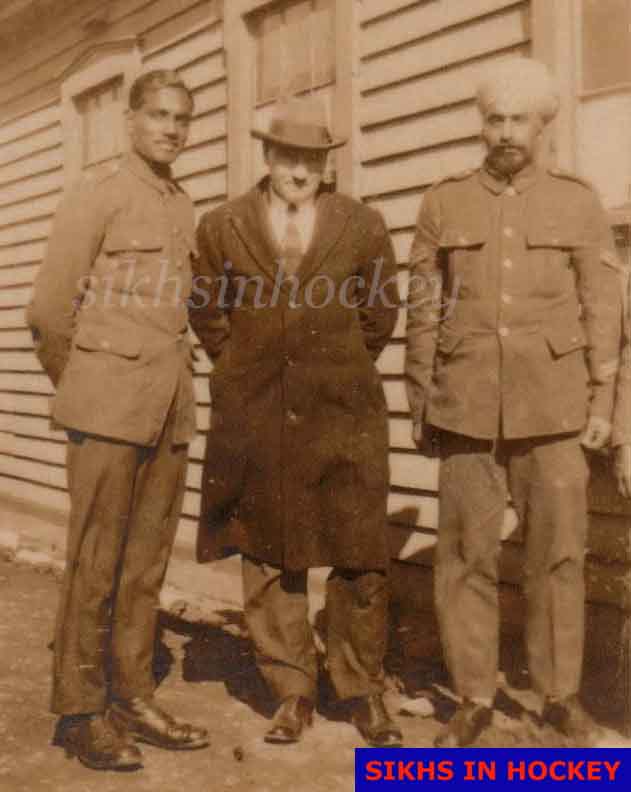
Dhyan Chand (l) and Thakar Singh (r)
The myth may have been debunked but not Dhyan Chand’s magical skills. And certainly not the hand, not known to many, who cared and guided the young legend-to-be at the very start of his illustrious career.
His name: Thakar Singh. Six years older than Dhyan Chand, he was entrusted with the task of taking care of young charges in an Indian Army team on tour of New Zealand and Australia in 1926.
It was a squad of 17 and included the 21-year-old Dhyan Chand, who would soon stride the hockey world like a colossus. The coming together of both personas provided a deeper legacy for Indian hockey that would bask in glory for decades during which six successive Olympic gold medals came the country’s way from 1928 to 1956 and a further two in 1964 and 1980.
It also laid the foundations of one of the most famous hockey nurseries in the world – Sansarpur in Punjab. Sansarpur was the birthplace of Thakar, born on 12 June, 1899. His junior teammate Dhyan Chand was born on 29 August, 1905, now celebrated as the country’s national sports day, in Prayagraj, Uttar Pradesh. Together they sowed the seeds of Indian indomitability in distant Australia and New Zealand.
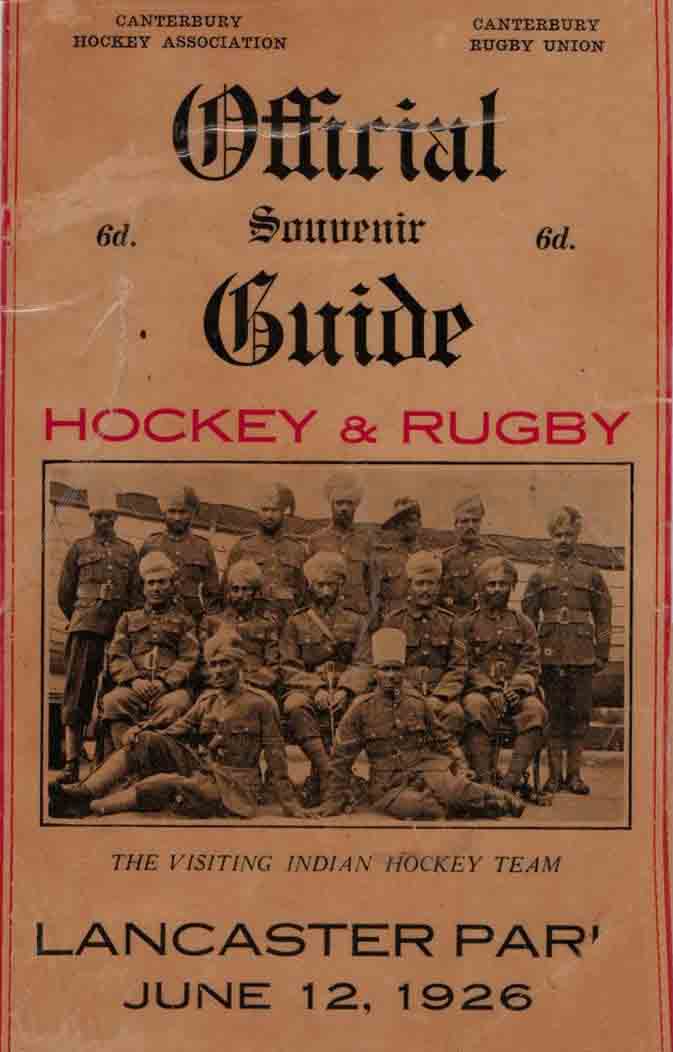
Official Souvenir Guide Lancaster Park, June 1926
Thakar Singh was born on 12 June 1899. Dhyan Chand was born on 29 August 1905 in Prayagraj. Together they sowed the seeds of Indian indomitability in distant Australia and New Zealand.
Thakar joined the British Indian Army on 6 June 1917, serving with the 1st Battalion, 4th Prince of Wales’ Own Gurkha Rifles in Bakloh, Himachal Pradesh. Dhyan Chand joined the British Indian Army on 29 August, 1922 and served with the 1st Brahmans Regiment based in Delhi. Following the reorganisation of the Indian Armed Forces in the same year, the unit was designated as the 4th Battalion, 1st Punjab Regiment.
Both were members of the team to Australia and New Zealand in 1926. The team of 17, led by Captain David Tenant Cowan, widely known as “Punch”, of the 1st Battalion 6th Gurkha Rifles, included five officers – four English and a Sikh and 12 Indian soldiers.
Naik Thakar Singh was one of three senior Non-Commissioned Officers on this tour and had the added responsibility of looking after the welfare of the young soldiers, all on their very first visit overseas. Dhyan Chand, a sepoy of the 4th Battalion, 1st Punjab Regiment, was among them.
Travel by ship made or a long tour lasting five months. But it also helped the team bond well. Hockey on board also helped them retain their sublime touch with the game while staying fit.
It counted for a lot. Dhyan Chand scintillated on tour. He donned the role of centre-forward to perfection from the word go. He was a spearhead of the Army attack that brooked no answer from hapless opponents.
On the day after landing, the Indian Army side made short work of a Navy team, winning 11-1 at the Remuera ground. Dhyan Chand had his say, netting four goals. Two days later, it was 11-0 against Waipa in Te Awumutu – the first of 21 scheduled matches. Dhyan Chand scored three times.
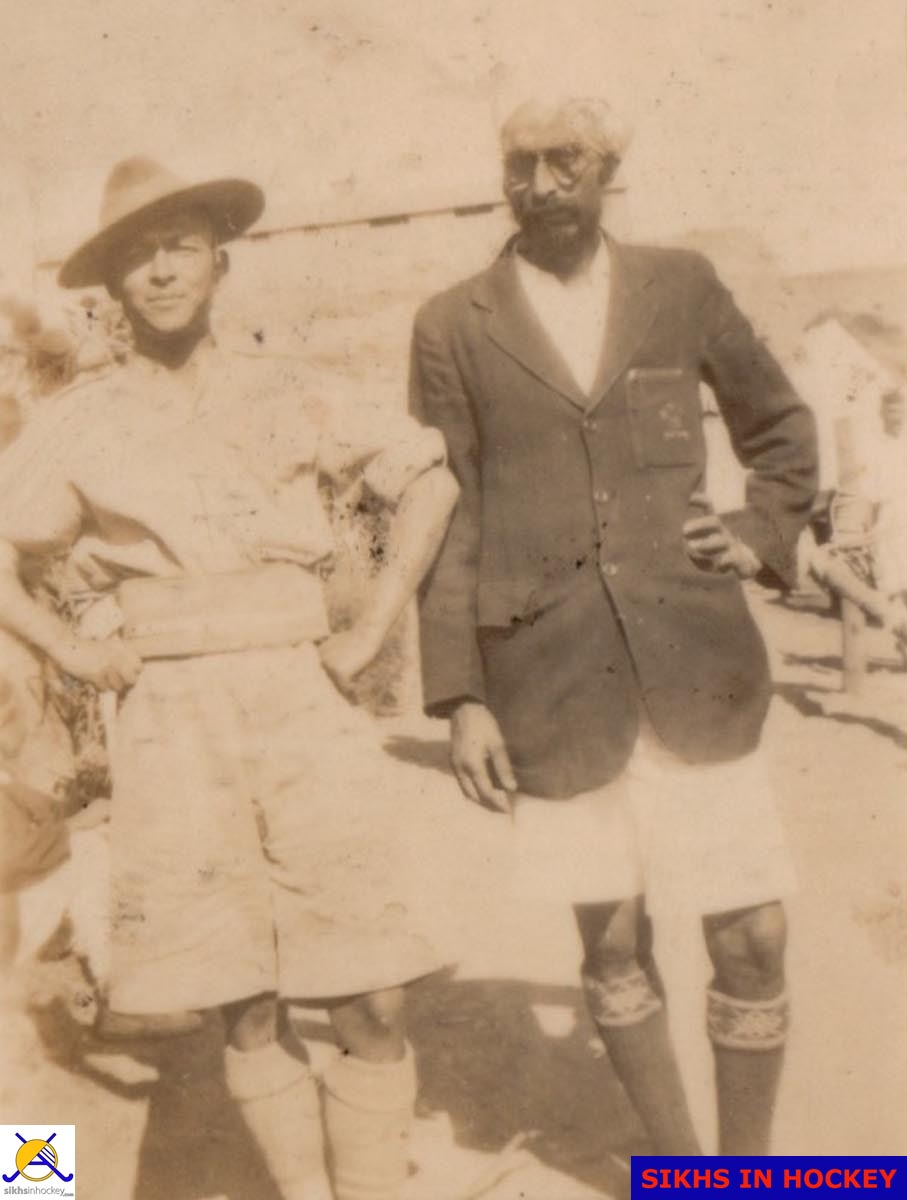
Captain Cowan and Thakar Singh
The huge wins set a trend and the Indian outfit turned crowd pullers. An unprecedented number of spectators turned up to watch their matches. The Indians appeared to hold a mystical aura, bewitching and bewildering their opponents testified by the results: 18 matches won, two drawn and one lost. They scored 192 goals and conceded only 24. Dhyan Chand top scored with 80!
There was also the touch of the exotic. The colour and flamboyance of the Indian Army team clad in their scarlet turbans, navy blue blazers with the star of India emblazoned on the pockets, white trousers, and scarlet stockings excited public imagination.
And the team played their full part off the field. They attended civil receptions at all the venues they visited, attended care homes, took time to discuss and demonstrate the finer points of hockey with players and spectators, as well as interact with the Indian community settled in different parts of New Zealand. The team had a natural tendency to mix with people.
Dhyan Chand quickly became a great favourite with the crowd in New Zealand. He repeated his performance during the team’s short stay in Australia where they played five matches.
In the very last match of the tour, on Thursday, 5 August, 1926, the Indian Army team defeated South Australia 14–0 at the Adelaide Oval. Dhyan Chand, was given the rare honour of captaining the Army team, which included three officers (unprecedented in those days for a private to captain a team which included officers).Thakar Singh manned the centre-half position.
The Indians attracted a lot of attention and the match against South Australia drew a large crowd among whom was the Governor of South Australia Lieutenant General Sir George Tom Bridges who was introduced to the teams before the “bully-off”. Dhyan Chand didn’t disappoint him or anyone else in the crowd, scoring nine goals. The man of the match, however, was left-winger Susan Nathan.
Dhyan Chand’s brilliant performance during this tour led to his selection for the Amsterdam 1928 Olympic Games and the rest, as they say, is history. Naik Thakar Singh was in good company with another Gurkha Officer, Captain L.A. Alexander of the 2nd Battalion, 5th Royal Gurkha Rifles, in the squad.
Thakar Singh played as a centre half in this Army team. At the end of the New Zealand tour, an interesting ceremony was held on July 18, 1926 at the Evelyn Firth Home, Parnell. On behalf of the Auckland Returned Soldiers’ Association, the president, S.A. Carr, gave each player a silver medallion, specially struck as a souvenir of the New Zealand tour.
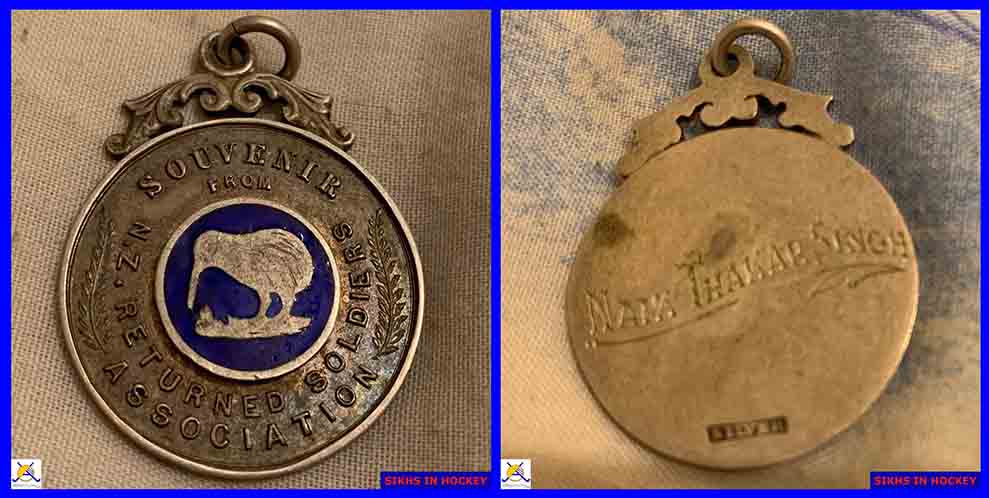
Naik Thakhur Singh Silver Medallion, 1926
Each Indian player was also presented by L.O. Kent, President of the Auckland Hockey Association, with a silver badge as a souvenir of the visit to Auckland.
An interesting anecdote related to the tour appeared in the Gisborne Times (New Zealand) dated 31 August, 1926:
“Here’s an incident from the stay of the Indian Army Hockey Team in Auckland. On the day when the team left the Dominion, one of the side, Thakar Singh, a Sikh, gave “Billy” Williamson, the President of Canterbury Hockey Association, who was up there for the test, a Sikh knife as a souvenir. “Billy”, not to be outdone in generosity and to return the gift, rushed up town and bought a gramophone, and handed it to Thakar Singh as the men went up the gangway”
Gurdev Singh, Thakar Singh’s son, and Kulwant Singh, Thakar Singh’s grandson, fondly remember this gift and state that the gramophone was a precious family possession for a long time. Thakar Singh left the Army after completing 23 years’ service and breathed his last on 19 September 1975 in Sansarpur, Punjab.
CONTINUING NEW ZEALAND LEGACY:
His son, Gurdev Singh Kullar, was also born in Sansarpur, Punjab, did his father proud by representing India at the 1956 Melbourne Olympic Games where India won the gold medal. He scored two goals on Olympic debut, against Afghanistan in a 14–0 win. Gurdev won silver at the 1958 Asian Games. He captained India at the 1962 Asian Games (Silver).
Gurdev made a mark in the game while studying at Cantonment High School in Jalandhar before playing for Punjab Police from 1956 to 1967.
And GenNext, in the case of both Thakar and Dhyan Chand kept up the tryst with New Zealand.
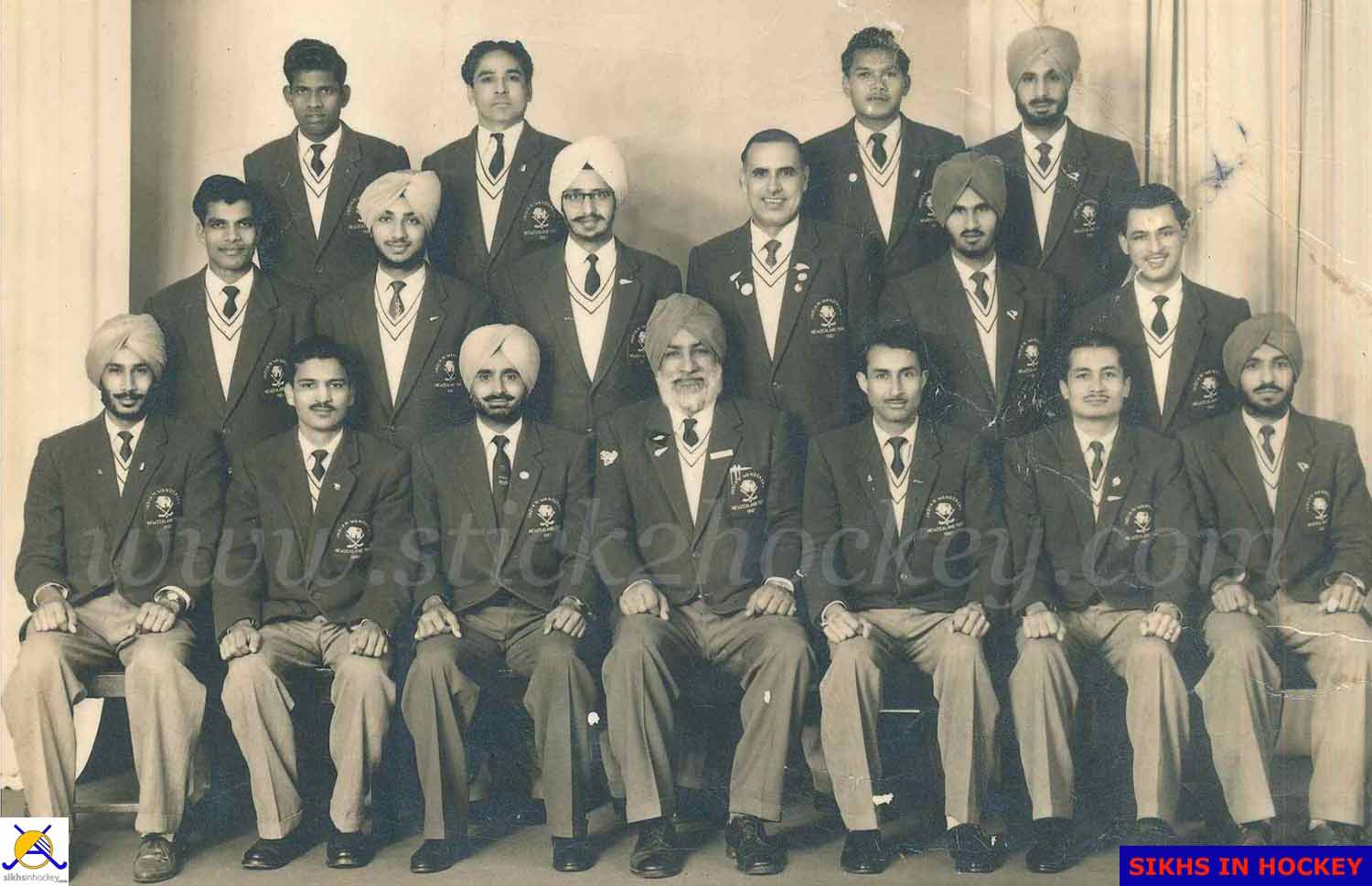
Indian Wanderers team that toured the Kiwi’s land, 1961
In 1961, Gurdev toured New Zealand, playing for the Indian Wanderers Team. Ashok Kumar, Dhyan Chand’s son, was also to do so 14 years later.
He joined Punjab Police in 1956 and played for Punjab Police and Punjab from 1956 to 1967. He was a member the Gold Medal winning Punjab Team in National Hockey Championship in Bhopal 1962 where he was the Captain and Bombay 1965; Bronze Medal in Hyderabad 1961, Madras 1963 and Delhi 1964. He was a member of the Gold Medal winning Punjab Police Hockey Team in All India Police Games in Gwalior 1956, Calcutta 1959, Hyderabad 1961, Trivandrum 1962, Jaipur 1964 and Guwahati 1966. He was in the Bronze Medal Team in Delhi in 1960.He was in the Punjab Police team that won the Beighton Cup in 1966, scoring the winning goal against Signals team.
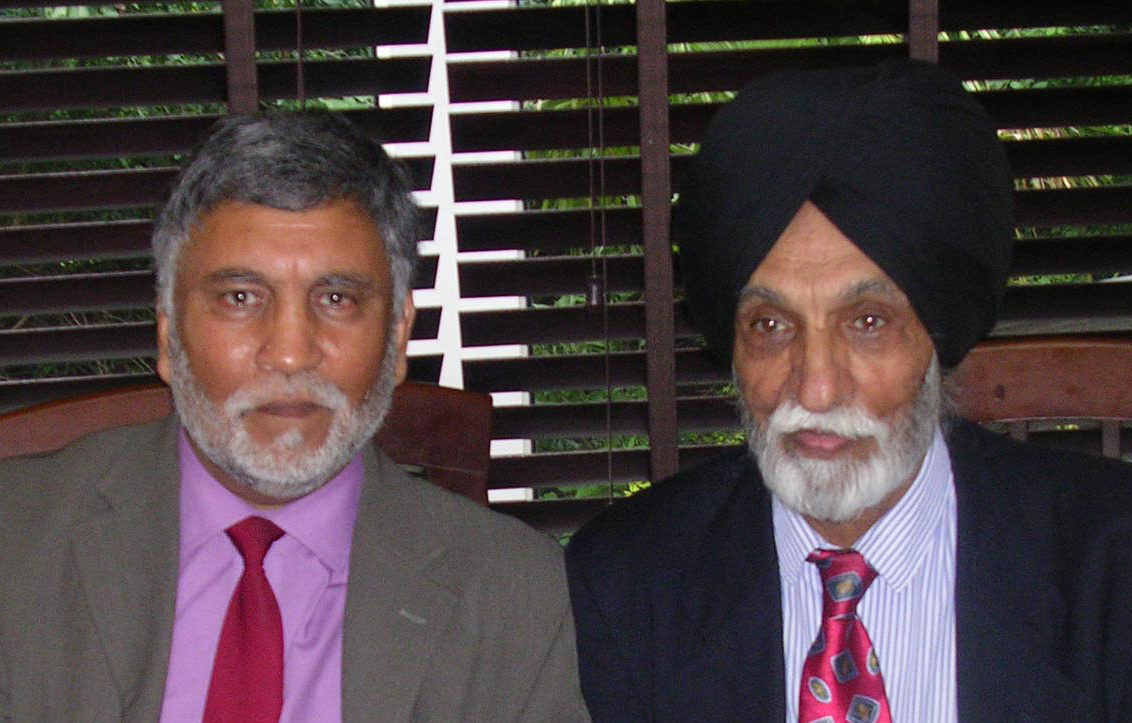
Author Dil Bahra with Gurdev Singh Kullar (r), 2007
Gurdev interacted frequently with Dhyan Chand, then a national selector and coach, in the late 1950s and early 1960s. He retired from international hockey in 1967 and migrated to the UK where he currently resides.
Dhyan Chand’s son, Ashok Kumar, kept up the hockey-playing lineage and represented India at the 1972 Munich and 1976 Montreal Olympics. He donned India colours also at the 1971 Barcelona, 1973 Amstelveen, 1975 Kuala Lumpur and 1978 Buenos Aires World Cups.
Ashok Kumar is immortalized by the match-winning goal in the 1975 World Cup final against Pakistan in the final to bring India its only title. He continued the tryst with New Zealand in 1975, touring with the India team that won a four-match series 3-1, a far closer contest than those that his father Dhyan Chand and Thakar Singh were involved in almost half a century earlier.
You can access other columns of author DIL BAHRA in the Link: HISTORIAN DIL BAHRA COLUMN


The author took us back in the days, about 100 years back. Enjoyed reading the entire length. There is no doubt the tour was a game changer for Indian sport, and also for the emerging youngster in Dhyan Chand. Pictures tell more, military life and all.
Natarajan, you are right. This tour was a game changer for Indian hockey.
Was able to identify Charanjit, Jaman Lal Sharma, Gurbax Singh (Sr) and Prithipal immediately.
Ajit Pal Singh, Olympian and Captain 1975 World Cup team has put the following observation in the Social Media:
Ajitpal Singh Olympian
Nicely written very informative about first sansarpur player Mr Thakar Singh who travelled with the Army team to New Zealand in 1926
Good to hear from Ajit Pal Singh who was also from Sansarpur – the Nursery of Indian Hockey
Mr. Kulwant Singh Kullar, England, has put the following observation in the social media
Thanx to sharing the artical of my Grand father Mr.Thakar Singh Kullar& my Father mr.Gurdev Singh Kullar.
Kulwant Singh Kullar, Thank you for all your help – much appreciated.
The wonderful players, wonderful research
The magical yesteryear legends
Yes, and we must remember them
A brilliant article highlighting the achievements of four great players coming from two families. The article has come out on the same day as Dhyan Chand’s birth anniversary. Another interesting fact l noticed from the article about Dhyan Chand, he joined the Army on the same date as his birthday. I met him at NIS Patiala when l was studying and playing for Lyallpur Khalsa College Jalandhar 1966-1969. Played against Ashok at University level and national level while playing for Kenya. I also played against Gurdev when his Police team used to play against our College team. It is a pity that l missed to meet Thakar Singh although l used to be at Sansarpur regularly during my College days. Both Thakar Singh and Dhyan Chand gave a good start to Indian hockey.
Thank you Surjit Singh Rihal. I know that your team mate at the Munich 1972 Olympic Games, Jagjit Singh Kular was also from Sansarpur and so was your team Coach, Hardev Singh Kular
Great legendary player, will eager to read more about him. Google is also full of his stories
Grate story on great player of Dhyan chand and his god-father, another great
Our history
It means this tour is a game changer in history of Indian Hockey.
Because of this tour we got a magical man who will rule hockey in the rest of his career. Special thanks to Mr.Thakar Singh for his care of the genius in the making then.
Spot on Ajay Tiwan, a game changer in history of Indian Hockey
Grate story on great player of Dhyan chand and his god-father, another great
They are real heros , we reading hockey magician and thakar Singh ND also see same new legend faces.
Yes,Dhyan Chand was a living Legend(HOCKEY) only heard of him,but was very happy to see & meet Balbir Singh in Lahore,1960 at the Rly colony grounds,where we witrnessed a match between the Indian/Pakistani teams, Pakistan went on to win the GOLD Medal in ROME Olympics 1960 ,great memories.very talented Players.
Seriously I did not have much idea about major dhyanchand though heard about him a lot. This article throws good light on his budding years
Thakar singh , the man behind the support of Major dhayan chand , helped
Major dhayan chand to the tour of newzealand and we know the rest is history . The goal machine, The legend Greatest of all time. Truly role models of millions of millions people 🙏. Thanks for the such informative article.
👍Beautiful article. I am one of the ardent fan of S. Gurdev Singh.
Thank you Col Mohinder Singh Mann. Pleased to hear that you are a ardent fan of S Gurdev Singh.